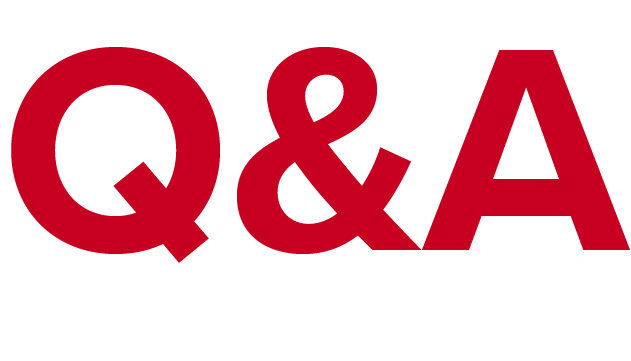
Bob Johnson has been in higher education for nearly 40 years. Through his newsletter, his ability to identify best practices, and his general wisdom, he has earned a devout following of enrollment professionals. We sat down with Bob to hear his thoughts on enrollment marketing and to talk to someone who fluently speaks our language.
The conversation has been edited for brevity and clarity.
You have amassed quite the following. Can you share with our readers a high-level snapshot of your career and how you have earned so many fans along the way?
I’ve been in the enrollment business since the 1980s, from being an early VP for Marketing in the 1980s, to a chief enrollment officer in the 1990s, followed by six years at a higher education marketing agency.
I served as the chair of the AMA Symposium for the Marketing of Higher Education for about 10 years, where I was able to meet a lot of folks. Since 2006, I have been a member of Gerry McGovern’s Customer Carewords partnership for website research, where I’ve worked with 30+ colleges and universities.
Today I stay in touch with my monthly “Your Higher Education Marketing Newsletter” (now in the 25th year), weekly “Link of the Week” selections from higher education websites, and Twitter and LinkedIn posts.
At Waybetter, we believe marketing to prospective students should be a two-way conversation and that’s how our campaigns work. What are some common mistakes you see from enrollment offices along the admissions funnel?
Two-way conversation cannot happen without paying attention to what the prospective student wants to know about you. That should govern in-person contact, email and text content, and website content priority.
It’s also critical to start the two-way conversation from the time an inquiry is first received. Learn to use the CRM system to segment communications and, if a personal two-way conversation is not possible with an entire inquiry pool, use lead qualification to establish priority for contact.
Start introducing potential students to their personal admissions counselor at the inquiry point.
The most common mistake at any point along the “admissions funnel” (I do hate the “funnel” image) is basing communications on what higher ed people want potential students to hear rather than what students want to learn about a school. For example, almost every school asks a potential student on an inquiry form about their academic interest area. And almost no schools use that information in early email inquiry responses. That is true now. It was true 20 years ago. And it is still not marketing smart.
Another example is that many schools are still reluctant to give individual net cost information early in a recruitment cycle. That’s been improving as cost interest has been increasing ever since 2008, but there’s still room for much more improvement.
Throughout your career, can you single out any enrollment marketing effort that you found that withstood the test of time?
Hate to say this, but the most consistent is not a good effort: the lack of direct marketing expertise in the purchase of high school students from ACT, SAT, and other sources. Too many schools continue to buy too many names of students with low probability that they will even respond to the first contact, let alone ever enroll. Using direct marketing principles, schools should only purchase names of potential students who match the profile of people who already enroll. Anything else is a wild gamble.
What worked then, and will continue to work, is early personal contact between an admission recruiter and a potential student at the inquiry level. It’s hard work but well worth it.
Higher education is fraught with vendors who claim to have the silver bullet. What advice would you give to teams when looking for enrollment marketing support?
There is no silver bullet. Stop looking for it.
Ask for three to five examples of successes and talk to people at the schools who have used the agency about what it took to achieve the success. If you can’t do that, move along.
Ask how they measure success. Don’t use enrollment inquiries, because only actual enrollments count. Decreased tuition discounts, increased geographic, ethnic, and economic diversity might also count if those are realistic goals.
Without the luxury of a crystal ball, what do you think higher education will look like in 5, and/or 10 years?
Price pressure continues on all but the handful of schools with very strong demand. The most “selective” schools will not change much in either 5 or 10 years.
Community colleges will grow in importance as tuition is eliminated and the ability to offer 4-year degrees with a practical, community focus continues to spread. This will hurt regional public universities and many private sector schools that have added “career” programs to traditional liberal arts offerings.
Growing community college strength may force more non-selective schools to promote the fact that most people who apply are admitted rather than clinging to the belief that they have to project a “selective” image to attract students. More colleges will admit/promote that admission is easy for people who meet basic qualifications that are easy to find on a website.
If you were leading a marketing/enrollment team now, what would you do in the first month of your tenure?
- Seriously talk to key people about their enrollment expectations and listen to the responses (hopefully realistic). “Key people” will vary by school but should include admissions staff, faculty who talk about enrollment, administrative partners, the president of course and, if possible, trustees.
- Make a serious budget review to see how resources match expectations.
- Have a heart-to-heart with the person I report to (should be the president) about gaps between expectations and resources. Agree on goals after this conversation. (Tell the president you’ll be doing this before taking the position, so s/he won’t be surprised. If the president wants you to have goals set before you are hired, don’t take the position.)
- Report back to everyone I talked to about the goals and why they are what they are. And, depending on the school, report back to the entire campus.
- Plan regular contact with new allies discovered during the initial talks.
Thanks for taking the time to answer these questions. As to not miss the moment, do you have any advice for all of us at Waybetter Marketing?
Continue to stay true to this point on your website: “We don’t want to rebrand you or sell you expensive software.” Use your proven client outcomes to clearly demonstrate how you have driven enrollment for your partners.
